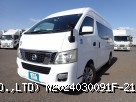

Real Motor Japan fast delivers high quality used vehicles to ports closest to Kenya. Place your order today!








When importing a vehicle into Kenya there are some important things to keep in mind.
The vehicle you are importing must meet Kenya Bureau of Standards Code of Practice for Inspection of Road Vehicles.
The three major criteria for acceptance are:
Age Limit
Vehicles that are more than eight years old from the year of manufacture are not allowed for importation.
Left Hand Drive
All left hand drive vehicles are not allowed for registration unless they are for a special purpose.
Road Worthiness
All used vehicles imported into Kenya shall be inspected for Road Worthiness, safety and other requirements.
When importing a car into Kenya there are some duties and taxes that need to be payed. These include the import duty at 25% of CIF (Cost, Insurance & Fright), excise duty at 20% of customs value and import duty, and VAT at 16% of customs value, import duty and excise duty. These are payable cumulatively.
Further, an Import Declaration Fee (IDF) of 2.25% of the CIF is also charged.
To clear the vehicle through Kenya Customs, an importer will have to contract a licensed clearing agent to process their declaration in the Simba 2005 system, pay the required duties and taxes and present all the relevant documentation for Customs to pass the entry.
The documents required are:
Original Commercial Invoice
Original Bill of Lading
Import Declaration Form obtained from Customs
Authentic Original Logbook from country of origin
The car industry in Kenya is primarily involved in the retail and distribution of motor vehicles. There are a number of motor vehicle dealers operating in the country, with the most established being Toyota, Cooper Motor Corporation, General Motors, Simba Colt and DT Dobie.
Toyota is the number one seller in Kenya with more than 1,600 sales and 15.7% share. Mitsubishi is in the 2nd spot with 11.4% share while Isuzu is a third with 7%.
In 2014 new and used car sales went up 23% in the first six months of the year.
This growth is the biggest reported in the last five years; 43,360 vehicles were bought in the first six months of the year, up from 35,246 units in the same period last year.
The KNBS (Kenya National Bureau of Statistics) data shows resurgence in imports. Kenya's imports rose 9.2% to Sh748.6 billion in the first half of this year compared to Sh685.4 billion a year earlier.
Second-hand car dealers account for about 80 per cent of total vehicles sold in the country. New vehicle dealers, however, recorded the fastest sales growth in the period, indicating robust demand from their customer base composed of the government, blue-chip firms and wealthy individuals.
| TEL | +254 722 367 091 +254 733 405 760 +254 752 896 894 |
|---|---|
| Website | www.aeromarine.co.ke |
If this is your first time importing a car into Kenya maybe you will need some help getting all your papers ready and all the payments done.
There are some useful services from different companies in Kenya that will help with the importation of your vehicle and the delivery once it has arrived in Mombasa Port. Some of these companies require that you buy the car with their services but there are others that will help you with the clearing registration and delivery.
The services they provide are:
Freight Forwarding
Custom Clearance Services
Consultation Services
Import & Export Documentation
Ship Agency
Transport
Car Importation & Clearance
Warehousing
Cargo Transshipment
Kenya Shipping
Here you can find a list of all the accepted clearing agents that work in Mombasa and Nairobi:
http://www.eaotransport.com/clearing.php?country=Kenya
Mombasa is the principal international Kenyan seaport and it includes Kilindini Harbour and Port Reitz on the Eastern side of the Mombasa Island and the Old Port and Port Tudor on the north side.
Kilindini is naturally deep and well sheltered, and is the main harbour where most shipping activities take place. It has 16 deep water berths, two oil terminals and safe anchorages and mooring buoys for sea-going ships.
The Old Port is entered between Ras Serani and Mackenzie Point and is used only by dhows and small coasting vessel of 55 metres LOA.
The Port of Mombasa not only serves Kenya but is also the main gateway to the Eastern African hinterland countries of Uganda, Rwanda, Burundi, DRC and Southern Sudan. It also provides direct connectivity to over 80 ports worldwide.
The port of Mombasa is managed and operated by the Kenya Ports Authority (KPA), a semi-autonomous government parastatal.
The port of Mombasa recently invested over 5 billion Kenya shillings in new cargo handling equipment and marine craft under its equipment replacement plan.
